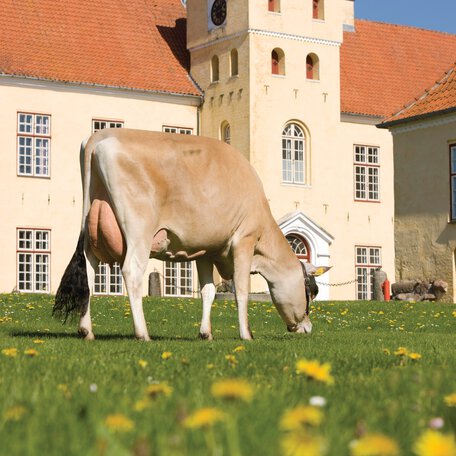Minerals: Focus on sodium, potassium, calcium and magnesium
When feeding dry cows, the ration should not contain feed with high sodium or potassium and usually not calcium either. You should typically avoid grain with extra sodium, pure legumes (like beans) and grass silage with high potassium content.
The most commonly used way to avoid milk fever is to lower the overall level of calcium during the dry period. This is done by avoiding the addition of calcium and calcium-rich feed. There are also feed supplements that reduce the negative effect of high calcium levels in the latter part of the dry period. These feed supplements bind calcium during its passage through the digestive tract, so it works the same way as feeding with very low calcium levels.
At the same time, it is important to maintain the dry cows' level of magnesium, as deficiency (<25 grams per day) increases the risk of milk fever.
The content of the feed ration with the normal recommended amount of dry cow minerals without calcium will most often meet the needs of the cow and foetus. If you feed with rations that are rich in straw or have a low protein level, make sure you supply minerals to avoid any deficiency.
The supply of Vitamin D is extremely important during the dry period, as this vitamin controls both the uptake of calcium through the intestinal wall and the mobilization of calcium and phosphorus from the bones. However, cows on grass or exercising in the summer receive sufficient Vitamin D during that period.
